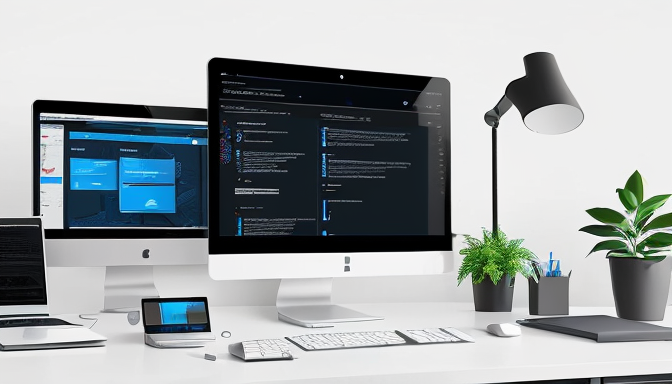When it comes to building a successful website, understanding the architecture of Joomla is crucial. Think of Joomla as a well-constructed house; each element, from the foundation to the roof, plays a vital role in ensuring everything functions smoothly. At the core of Joomla’s architecture are its components, modules, plugins, and templates, all working together harmoniously.
Let’s break it down: Components are like the main rooms of your house; they provide the primary functionality of your site. For instance, a blog component handles all your posts and categories. On the other hand, modules are akin to furniture—think of them as the decorative elements that enhance the space. They can display menus, news feeds, or even advertisements in designated areas.
Next up, we have plugins, the hidden gears that keep everything running smoothly. They extend Joomla’s capabilities, allowing you to add features like SEO optimization or social media sharing without a hitch. Finally, templates are the paint and wallpaper, giving your site its unique look and feel. They dictate the layout and design, ensuring your website not only functions well but also looks stunning.
At the heart of Joomla’s architecture lies the MVC pattern (Model-View-Controller), a design pattern that separates the application logic from the user interface. This separation makes it easier to manage and scale your website. So, whether you’re just starting or looking to enhance an existing site, understanding these structural elements is your blueprint for success in the world of Joomla!
Understanding Joomla’s Core Structure
When it comes to building a website with Joomla, understanding its core structure is like having a treasure map that leads you to success. At the heart of Joomla’s architecture are several key elements that work together to create a seamless web experience. Let’s break it down!
First up, we have components. These are the building blocks of your site, responsible for displaying content and managing functionality. Think of them as the engines of a car—without them, you’re not going anywhere! Components handle everything from articles to user management, making them essential for any Joomla site.
Next, we can’t forget about modules. These are like the accessories you add to your car—helping it look good and perform better. Modules allow you to display content in various positions on your site, such as sidebars or footers. They are flexible and can pull in information from components, making your site dynamic and engaging.
Then we have plugins, the unsung heroes of Joomla. They act behind the scenes, providing additional functionality without cluttering your site. Want to add social media sharing buttons or enhance SEO? Plugins have got your back!
Lastly, Joomla uses the MVC (Model-View-Controller) pattern, which is a design philosophy that separates the application logic from the user interface. This means that developers can easily manage and update the code without affecting the overall design, ensuring your site remains sleek and functional.
In summary, understanding these structural elements—components, modules, plugins, and the MVC pattern—will empower you to harness the full potential of Joomla. So, are you ready to dive into the world of Joomla and build something amazing?

Best Practices for Joomla Development
When it comes to Joomla development, understanding its structural elements is crucial for building a robust and efficient website. At the heart of Joomla’s architecture are components, modules, plugins, and templates. Each plays a unique role, much like the instruments in an orchestra, creating a harmonious web experience when properly aligned.
Components are the main building blocks of your site, managing the data and displaying it to users. They are responsible for the core functionalities, like managing articles or user registrations. On the other hand, modules serve as the sidekicks, offering additional features and content in specific areas of your site. Think of them as the sprinkles on top of a cupcake—they enhance the overall experience without being the main attraction.
Plugins, however, are the unsung heroes, providing hidden functionalities that can significantly extend your site’s capabilities. They run in the background, executing tasks based on events, which keeps your site running smoothly. Lastly, templates shape the visual appeal of your Joomla site, allowing you to customize the look and feel to match your brand identity.
Utilizing the MVC (Model-View-Controller) pattern is another best practice that every Joomla developer should embrace. This design pattern separates your application’s logic, user interface, and data management, making your code cleaner and easier to maintain. By keeping these elements distinct, you not only enhance performance but also pave the way for future scalability.
In summary, mastering these structural components and adhering to best practices will not only streamline your Joomla development process but also help you create a site that is secure, efficient, and ready for growth.
Frequently Asked Questions
- What is Joomla architecture?
Joomla architecture refers to the underlying structure and components that make up the Joomla content management system (CMS). It includes core files, the database structure, and various extensions that work together to create a powerful web development platform.
- How can I optimize my Joomla site for better performance?
To enhance performance, consider implementing caching, optimizing images, and minimizing the use of heavy extensions. Regularly updating your Joomla installation and extensions also helps maintain speed and security.
- What are Joomla extensions and why are they important?
Extensions are add-ons that extend the functionality of Joomla. They can range from simple plugins to complex components and templates. Using the right extensions can significantly enhance your site’s capabilities, allowing for a more customized user experience.
- Is Joomla secure for web development?
Yes, Joomla is generally secure, but it’s crucial to follow best practices such as using strong passwords, keeping your software updated, and regularly backing up your site to protect against potential threats.
- Can I scale my Joomla site as my business grows?
Absolutely! Joomla is designed to be scalable, allowing you to add new features and content as your business expands. Just ensure you follow best practices in architecture and performance to support growth.